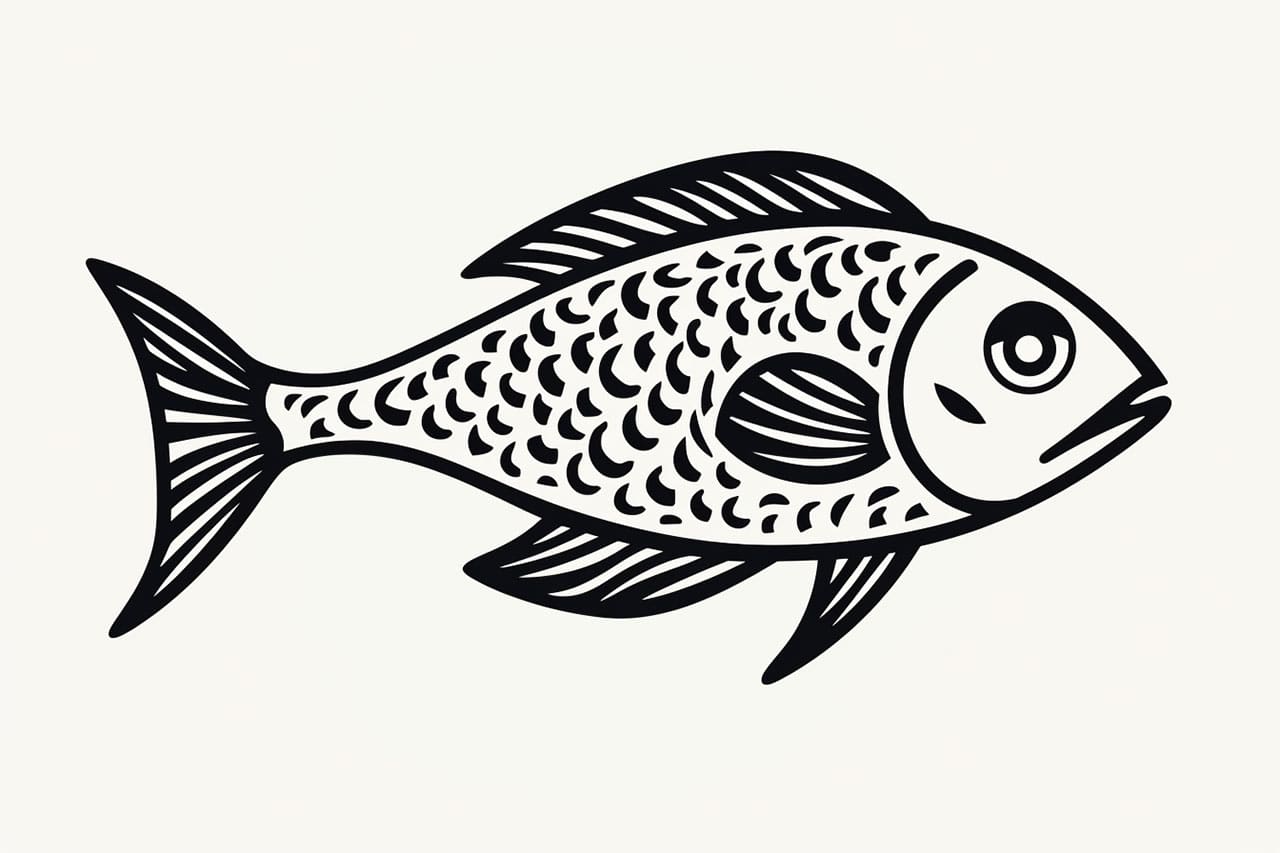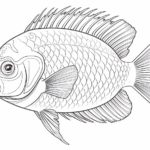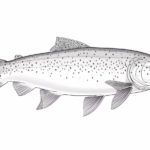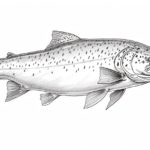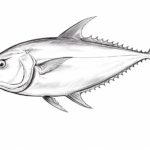Do you have a creative streak and a passion for drawing? Drawing fish can be a fun and relaxing activity that allows you to unleash your artistic abilities. Whether you are a beginner or an experienced artist, this step-by-step guide will help you learn how to draw a fish easily. So grab your pencil and paper, and let’s get started!
Materials Required
Before we dive into drawing, let’s make sure you have all the necessary materials on hand. Here’s what you’ll need:
- Drawing paper
- Pencils (preferably a range of hardness, such as HB, 2B, 4B)
- Eraser
- Fine-tip marker or pen (optional for outlining)
- Colored pencils or markers (optional for adding color)
Now that you have your supplies, we can begin the artistic journey of drawing fish!
Step 1: Start with Basic Shapes
Begin by drawing a large oval shape for the body of the fish. This oval will act as a framework for the fish’s body proportions. Next, add a small triangle to one end of the oval to represent the fish’s tail.
Step 2: Define the Fish’s Body
Using the oval shape as a guide, start adding details to the fish’s body. Draw a curve along the top of the oval to create the fish’s back. Then, draw a similar curve on the bottom to form the fish’s belly.
Step 3: Add the Fins
Fish have several fins that help them swim gracefully through the water. To draw the fins, begin with the pectoral fin on the side of the fish’s body. This fin is located near the gills and acts as the fish’s steering mechanism.
Next, draw the dorsal fin on the fish’s back. This fin helps stabilize the fish as it swims. You can make this fin as tall or as short as you’d like, depending on the species of fish you are drawing.
Finally, draw the tail fin by adding a series of triangular shapes at the end of the oval. The tail fin gives the fish forward momentum and is an essential part of its anatomy.
Step 4: Detail the Face
Now it’s time to give your fish some character by adding facial features. Start by drawing a small circle for the eye. Place the eye near the front of the fish’s body, slightly above and to the side of the mouth. Add a smaller circle inside the eye to represent the pupil.
Next, draw a curved line for the fish’s mouth. You can make the mouth open or closed, depending on the expression you want to create. If you choose to draw an open mouth, you can add small lines to represent teeth or a tongue.
Step 5: Add Scales and Patterns
Fish have beautiful scales that add texture and detail to their bodies. To draw scales, start by adding small, curved lines along the fish’s body. These lines should follow the contour of the oval shape. Continue adding scales until you cover the entire body of the fish.
You can also add patterns or stripes to your fish if you’d like. Use your imagination and experiment with different designs to make your fish unique and visually appealing.
Step 6: Outline and Refine
Once you are satisfied with the basic shape and details of your fish, it’s time to outline the drawing with a fine-tip marker or pen. This step will make your drawing stand out and give it a more finished look.
After outlining, erase any unnecessary pencil lines or guidelines. Take your time and be careful not to erase the important details you’ve added.
Step 7: Color Your Fish (Optional)
If you want to add color to your fish drawing, now is the perfect time to do so. Use colored pencils or markers to bring your fish to life. Take note of the colors and patterns typically found in the species of fish you are drawing, or let your imagination run wild and create your own vibrant color palette.
Experiment with shading and blending techniques to add depth and dimension to your drawing. Remember to start with lighter colors and gradually build up the darker shades for a more realistic effect.
Conclusion
Congratulations! You’ve successfully learned how to draw fish easily. By following these step-by-step instructions and using your creative instincts, you can draw a variety of fish species and create stunning works of art. Remember to practice regularly and have fun with your drawings. So go ahead, pick up your pencil, and dive into the world of fish drawing!
Fun Facts about Fish
Fish are incredibly diverse and fascinating creatures that inhabit waters all around the globe. Here are some fun and interesting facts about fish:
- Enormous Diversity: There are over 33,000 known species of fish, making them the most diverse group of vertebrates on Earth. They live in a wide range of aquatic environments, from high mountain streams to the deepest parts of the ocean.
- Fish That Walk: Some fish species, like the mudskipper, can walk on land using their fins. Mudskippers spend most of their life out of water, breathing through their skin and the lining of their mouth and throat, which must stay moist.
- Deep-sea Giants: The whale shark is the largest fish species in the world, with the largest confirmed individual measuring over 62 feet (18.8 meters) in length. Despite their size, whale sharks are gentle giants, feeding primarily on plankton.
- Fish with Transparent Heads: The barreleye fish has a transparent head, which allows it to see through its skull to spot prey above. Its eyes are tubular and can rotate to look forward or upward.
- Electric Fish: Some fish, like the electric eel and electric ray, can produce electric shocks. They use this ability to hunt prey, defend themselves, or communicate with other fish.
- Long-lived Fish: Some fish species are known for their exceptional longevity. For example, the Greenland shark is thought to be the longest-living vertebrate, with estimates suggesting it can live for more than 400 years.
- Fish That Use Tools: The wrasse is one of the few fish known to use tools. It has been observed picking up rocks with its mouth to crack open clamshells.
- Bioluminescence: Many deep-sea fish produce their own light through a chemical process called bioluminescence. They use this ability to attract prey, communicate, or find mates in the pitch-black depths of the ocean.
- Fish Communication: Fish communicate with each other through a variety of methods, including sounds, bioluminescence, electrical pulses, and body movements. Some species can even change color to send messages to other fish.
- The Oldest Fish Fossil: The oldest known fish fossil is about 530 million years old, dating back to the Cambrian period. This era is when most major groups of animals first appear in the fossil record.
- Parrotfish Sleep in a Bubble: The parrotfish secretes a mucous cocoon around itself at night, which masks its scent from predators and parasites while it sleeps.
- Fish Feel Pain: Research has shown that fish can feel pain. They have nociceptors, or pain receptors, which detect harmful stimuli, much like mammals and birds.
These facts highlight the incredible adaptability and diversity of fish, showcasing their unique behaviors, physiological features, and the critical roles they play in aquatic ecosystems.

